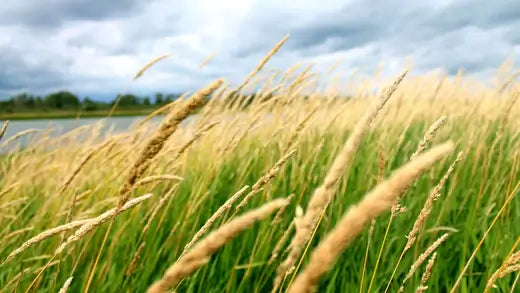Are you searching for the perfect method to bring your outdoor space alive with vibrant flowers? Take a look at these sun-loving perennials are an easy and effective solution. They're sturdy plants that come back year after year, adding color and texture to your landscape or garden without effort.
The best part is that these flowers are adaptable, making them ideal for everyone! With the proper understanding of how to properly take care of and manage sun-loving perennials, even the greenest of thumbs can produce stunning outdoor displays that they can show off to their friends. Read on if you're looking to add a splash of color to your landscape or garden effortlessly this time of year!
Butterfly Weed
If you're in the market for a butterfly-friendly garden that can draw many guests and butterflies, the butterfly plant (Asclepias tuberosa) is a must-have. Its vibrant bright orange flowers draw various butterflies to eat nectar from the flower. In addition to butterflies, this stunning flower also draws birds, bees, and other pollinators who feast on the nectar.
Butterfly Weed is a North American native planting, ideal for naturalizing the sunniest places within your yard. Asclepias tuberosa is a vital component of an insect garden. Its huge, flat-topped bright orange flowers swell upwards and extend up to two feet, drawing legions of butterflies. The abundance of flowering orange blooms in huge clusters adds a large color to your garden.
It is admired for its cut flowers and is a preferred option for arrangements of dried flowers. They also create beautiful seeds that form pods. Crafters typically use these seeds to add texture and interest to floral wreaths and arrangements like the blossoms that are sunk.
Milkweed Plant
"milkweed" refers to the sticky, white liquid it produces when you cut off the stem. The butterfly garden is at its finest using this type of plant. The monarch butterfly's majestic appearance is currently on the threatened species list. However, one step to increase their numbers is adding the milkweed (Asclepias incarnata) plants to your garden.
It is a North American native species that provide food to the caterpillars of monarch butterflies. Milkweed is the only plant to give its eggs, larvae and newly born caterpillars protection from predators and the food they require.
Since monarch butterflies can only be found in their North American continent, from Canada to Mexico, It is only natural that they have adapted to this once-exuberant native plant.
The stunning floral blooms of cotton candy are adorned with vivid shades of purple, pink, and lavender. Milkweed takes on that fluffy look when several tiny, vanilla-scented blooms form in a center flower, creating clusters.
The perennial plants produce seeds in their pods, forming inside them that dry in the summer heat and then pop open for the next season. They're easy to grow and require only an area with plenty of sun, well-mixed soil, and moisture, but with good drainage.
Hepatica
Hepatica nobilis is an easily-growing species that is closely related to the buttercup. It thrives in the shade of shaded places and prefers to grow in soil that is rich and filled with organic matter. While it can withstand short dry spells, it is a fan of humidity. Peat moss is a great partner plant to reduce your efforts to meet the conditions.
They have dark-green stems that are upright. The leaves of the Emerald Green are oval, with prominent tips, and develop in threes. They are green from the beginning of spring to autumn and change to a beautiful red or amber during autumn.
Flowers are white, with the petals being oval with six or more, which form a cup-like shape. Each bloom of fresh white is small, just a little over an inch in width. The centers of the flowers are vibrant and fresh shade in spring's green. They're a pleasant sight that will wake you early and brighten up your day in the wintery springtime weather.
Red Hot Poker
Red hot poker plants are your ideal choice if you're looking for a bloom that will last through the entire summer. They come in various colors and thrive in any place with moderate sunlight.
Red hot plants provide the look of desert in your garden across the US. Kniphofia can be trusted and requires minimal maintenance when it comes to tough perennials. The blooms begin in spring, continue until summer's end, and are characterized by impressive and stunning flower spikes. Kniphofia is easy to cultivate.
Stay away from the common gardening plants! If you're looking for something that will enhance your landscape this year, consider these unusual plants that will attract attention. Learn how to cultivate these flowers and observe your garden become a deep pool of colors. Plant them and watch them transform into a beautiful garden. Red Hot Poker plants are low maintenance and perfect for gardeners just beginning their journey.
Geranium
The native woodland perennial displays a stunning display of purple or lavender for about a month every year. The flowers bloom from late spring to the beginning of summertime.
It is a perennial cold-hardy indigenous of North America. It is a popular plant across Canada, the American south, and the western United States.
If the conditions are optimal, Geraniums can grow up to two feet in height at the time of maturity. It is a great size to plant in borders in the garden or an area of the garden that is sunny.
The stems and leaves of the geranium maculatum flower are lush and dark in color. They make beautiful foliage that is perfectly paired with beautiful jewel-toned flowers. Each bloom comprises five round petals measuring between one and two inches. Each bloom has a slight lift, which gives the shape of a cup for the bloom. The hues are usually deep pink, purple, or lavender. However, blush pink or white flowers can also be found.
Lily Of The Valley Plant
Lily of the Valley is native to several continents, including Europe, Asia, and North America. Although the delicate blooms may suggest otherwise, it's an attractive, balanced plant. It is drought-tolerant and deer-resistant and requires minimal care.
The delicate, creamy bell-shaped flowers can bloom in late spring. However, the beautiful foliage can withstand the summer heat in the middle and late part of the year and remains a bright green throughout the season.
The flowers grow on delicate stems that rise from the lush foliage at the base of the plant. The leaves, which are long and oval, measure about five to ten inches long and approximately four inches wide. They are arranged in a semi-upright position and feature smooth edges.
Tiger Lily
The tiger Lily emerges each spring from bulbs. Its stalk is dark-green, straight, and strong, despite a relatively slim size. The leaves of a tiger lily are small and have an oval shape. The texture is smooth, and they have a green color like the stem.
The tiger Lily's most well-known characteristic is the orange bloom with darker chocolate-colored spots. Naturally, these bright orange and brown tiger-like colors give the tiger lily its name.
Each big flower opens to reveal six stunning petals, each sporting a graceful curvature. The flower's centers are yellow or white and long, making the flower look even more captivating. In most zones of growth, The plant's annual growth cycle begins late in spring, then blooms in the second portion of summer, which is usually late July or early August.
No matter where it comes from, The tiger lily, regardless of its origins, is well-suited for its moderate USDA growing zones. It is easily adapted and embraced by many Americans. It is a plant that thrives in mixed shade and sun or full sun and can reach an average height of three feet. Beware of the stunning appearance; this flower is fairly easy to cultivate and maintain.

















































